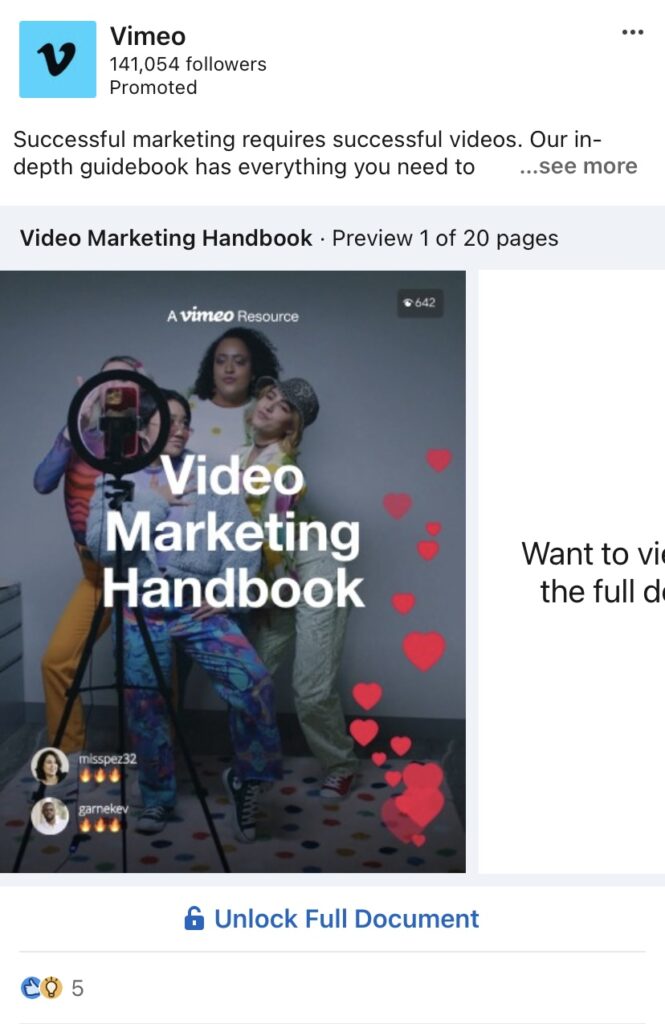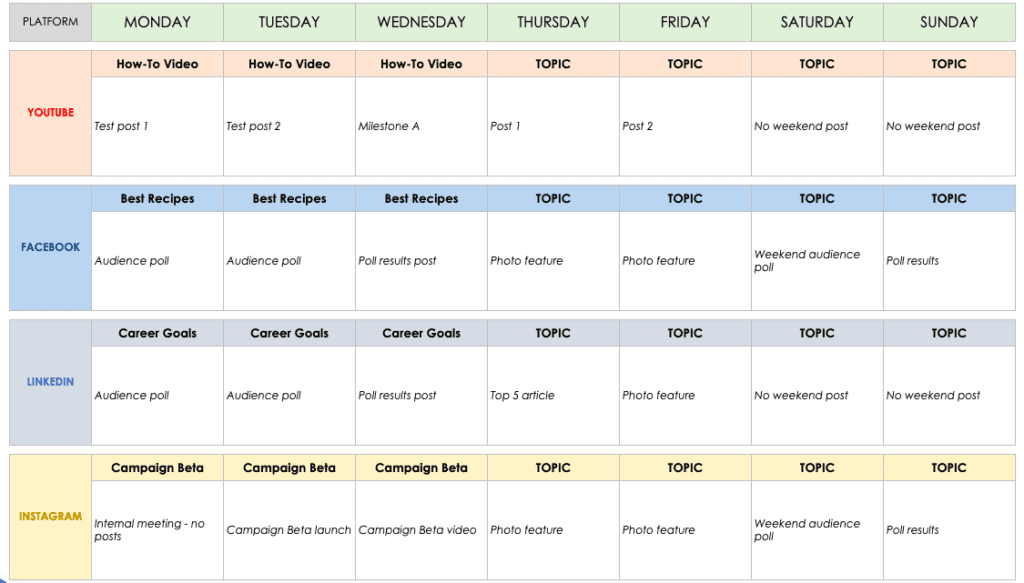Social media marketing has become an essential tool for business owners in 2024. Whether you are a small local business or a large enterprise, leveraging social media platforms can help you reach a larger audience, engage with customers, and ultimately grow your brand by increasing brand awareness. However, with so many social platforms available, it can be overwhelming to determine where to begin and how to manage a successful social media strategy.
This comprehensive guide provides key tips and strategies to help business owners maximize their social media marketing efforts.
Introduction to Social Media Marketing
In the ever-evolving digital landscape, social media marketing has emerged as a pivotal component of any comprehensive marketing strategy. By leveraging social media platforms, businesses can promote their brand, products, or services to a vast audience.
This form of marketing involves creating and sharing content tailored to engage with your target audience, build brand awareness, and drive traffic to your website. A successful social media marketing strategy requires a consistent effort in content creation, curation, and engagement, ensuring that your brand remains relevant and top-of-mind for your audience on each social media platform.
What is Social Media Marketing?
Social media marketing is a dynamic form of digital marketing that utilizes social media platforms to promote a brand, product, or service. It encompasses the creation and sharing of content designed to engage with your target audience, increase brand awareness, and drive website traffic and sales.
By tapping into the vast user base of social media platforms, businesses can reach a larger audience, foster meaningful connections, and ultimately drive conversions. Whether through posts, stories, or ads, social media marketing offers a powerful avenue for increasing brand visibility and achieving marketing goals.
Benefits of Social Media Marketing
The advantages of social media marketing are manifold, making it an indispensable tool for businesses of all sizes. One of the primary benefits is increased brand awareness; by consistently posting engaging content, businesses can reach a broader audience and make their brand more recognizable.
Improved customer engagement is another significant benefit, as social media platforms provide a direct line of communication with your target audience, allowing for real-time interactions and relationship building.
Additionally, social media marketing can drive substantial website traffic and sales, offering a cost-effective way to reach potential customers and convert them into loyal clients. Establishing a strong brand identity through social media also helps in differentiating your business in a crowded market.
Top Social Media Marketing Strategy Tips
1. Understand Your Audience
The foundation of any successful social media strategy is understanding your target audience. Without a clear grasp of who your customers are, you may end up wasting resources on platforms that don’t align with your brand’s goals.
- Develop Buyer Personas: Start by creating detailed buyer personas. Identify key demographic information such as age, gender, income, occupation, and location. Delve deeper into psychographics to understand their interests, behaviors, and values.
- Conduct Surveys: Use surveys or interviews to gain firsthand insights into what your audience cares about. Understand their pain points, motivations, and what kind of content they consume on social media.
- Monitor Competitors: Look at your competitors’ social media strategies. Which platforms do they focus on? How do their followers engage with them? This can provide clues about where to direct your efforts and help you develop your own strategy.
2. Choose the Right Platforms
It’s not necessary to be active on every social media marketing platform. Instead, focus on the platforms where your target audience spends the most time.
- Facebook: With over 2.9 billion monthly active users, Facebook is one of the most versatile platforms, ideal for businesses targeting a broad demographic.
- Instagram: Perfect for visual content, Instagram attracts younger audiences (Millennials and Gen Z). It’s ideal for businesses in fashion, travel, food, and lifestyle.
- LinkedIn: A professional networking site, LinkedIn is best suited for B2B companies and industries that focus on professional services.
- Twitter: Known for its fast-paced nature, Twitter is great for real-time updates, trending topics, and customer service engagement.
- TikTok: Rapidly growing, TikTok is a great platform for creative, short-form video content. It’s especially popular among Gen Z.
- Pinterest: If you’re in industries like home decor, fashion, or food, Pinterest can drive high traffic to your website through visual inspiration.
Focusing on the social media marketing platforms that align with your audience ensures that you don’t spread your resources too thin.
3. Develop a Consistent Brand Voice
Your brand voice is how your business communicates with its audience on social media. It should align with your company’s overall messaging and resonate with your audience.
- Define Your Brand’s Personality: Is your brand professional, witty, compassionate, or innovative? Your tone of voice on social media should reflect this personality.
- Be Relatable: Authenticity is key on social media. Users are more likely to engage with brands that come across as human and transparent rather than overly corporate or stiff.
- Consistency Across Platforms: While the style and type of content may vary depending on the platform, your brand’s core voice should remain consistent to ensure cohesive messaging.
4. Create Valuable and Engaging Content
Content is the heart of social media marketing. Posting engaging and valuable content regularly can help attract and retain followers. A well-structured social media marketing plan is essential for guiding the execution of your broader social media strategy.
- Use a Mix of Content Types: Diversify your content to keep your audience engaged. This can include images, infographics, videos, stories, polls, and live streams.
- Educational Content: Share tips, how-tos, and industry insights that provide value to your audience.
- Entertaining Content: Inject humor, behind-the-scenes footage, or memes to humanize your brand and connect on a more personal level.
- User-Generated Content: Encourage your followers to create content about your brand and share it. This not only builds trust but also expands your reach.
- Storytelling: People love stories. Whether it’s the story of your brand’s founding, a customer testimonial, or employee highlights, storytelling can captivate your audience.

5. Leverage Social Media Advertising
Organic reach on social media has been declining over the years, making paid social media advertising a crucial component of a successful strategy.
- Set Clear Goals: Before launching an ad campaign, define your goals. Are you looking to increase brand awareness, generate leads, or drive sales?
- Target Your Ads: Use the sophisticated targeting tools that social media platforms offer. You can target ads based on demographics, interests, behaviors, and even lookalike audiences who resemble your existing customers.
- A/B Testing: Always test different versions of your ads to see which performs better. Experiment with different headlines, visuals, and calls to action to optimize your campaigns.
- Retargeting: Retarget people who have interacted with your brand but haven’t yet converted. Social media platforms like Facebook allow you to show ads to people who have visited your website or engaged with your content.

6. Engage With Your Audience
Social media is not a one-way street. Engagement is crucial for building relationships with your followers and turning them into loyal customers.
- Respond to Comments: Replying to comments and messages shows your audience that you care about their opinions and feedback.
- Host Contests and Giveaways: People love free stuff! Hosting contests or giveaways encourages user participation and boosts engagement.
- Ask Questions: Spark conversations by asking open-ended questions. This can lead to increased interaction on your posts.
- Collaborate with Influencers: Partnering with influencers can introduce your brand to a wider audience and boost credibility.

7. Utilize Hashtags
Hashtags can help improve the discoverability of your posts and attract new followers.
- Research Hashtags: Use relevant hashtags that are popular in your industry. Tools like Hashtagify and RiteTag can help identify trending and effective hashtags.
- Branded Hashtags: Create a unique hashtag for your business that encourages user-generated content and allows users to easily find posts related to your brand.
- Don’t Overuse Hashtags: While hashtags can be useful, don’t overload your posts with them. Stick to a few relevant ones to avoid looking spammy.

8. Analyze Your Performance
Tracking the performance of your social media efforts is key to understanding what works and what doesn’t.
- Use a Social Media Management Platform: A social media management platform enables users to find, schedule, manage, and analyze their content across various channels. Platforms like Facebook Insights, Instagram Analytics, and Twitter Analytics provide valuable data on your posts’ reach, engagement, and audience demographics.
- Track Key Metrics: Keep an eye on metrics such as reach, engagement (likes, shares, comments), click-through rates (CTR), conversions, and follower growth.
- Adjust Based on Data: Use insights from your analytics to adjust your strategy. If certain types of content or platforms are outperforming others, focus more resources in those areas.
9. Stay Updated with Trends
Social media trends are constantly evolving, and keeping up with them can help your business stay relevant.
- Keep an Eye on Algorithm Changes: Social media platforms frequently update their algorithms, which can impact the visibility of your content. Stay informed about these changes to adapt your posting strategy accordingly.
- Participate in Trending Challenges: If there’s a trending challenge or topic that aligns with your brand, don’t be afraid to jump in. This can boost your visibility and make your brand more relatable.
- Explore New Features: Platforms like Instagram and Facebook frequently release new features such as stories, reels, and shopping options. Experimenting with these tools can help keep your content fresh.

10. Maintain a Consistent Posting Schedule
Consistency is key when it comes to social media marketing. Posting sporadically or going silent for long periods can lead to decreased engagement and loss of followers.
- Create a Content Calendar: A social media content calendar can help you plan and schedule posts in advance, ensuring you maintain a steady flow of content.
- Post at Optimal Times: Use analytics tools to determine when your audience is most active and schedule your posts accordingly.
- Balance Quality and Quantity: While consistency is important, avoid posting just for the sake of it. Focus on quality content that provides value to your audience.

11. Collaborate with Other Businesses
Partnering with complementary businesses can expand your reach and introduce your brand to new audiences.
- Cross-Promotions: Collaborate with other businesses for cross-promotions. For example, a fitness brand could partner with a healthy food company for mutual shout-outs or giveaways.
- Guest Posts and Takeovers: Invite influencers or industry experts to take over your social media account for a day. This creates unique content and attracts their followers to your page.
- Host Joint Events: Co-hosting webinars, live streams, or workshops with other businesses can help you engage both audiences.
12. Optimize for Mobile
A significant portion of social media users access platforms via mobile devices, so ensuring your content is mobile-friendly is essential.
- Use Mobile-Optimized Images: Ensure your images and videos are the correct size and resolution for mobile viewing. For example, vertical videos perform better on platforms like Instagram and TikTok.
- Short Captions: Mobile users often skim content, so keep your captions concise and to the point.
- Call-to-Action Buttons: Make sure your call-to-action buttons (such as “Shop Now” or “Learn More”) are prominent and easy to tap on mobile devices.
13. Integrate Social Media with Other Marketing Channels
Social media should be part of a larger marketing ecosystem. By integrating social media with other channels, you can create a cohesive brand experience.
- Email Marketing: Use social media to grow your email list by promoting exclusive offers or content for subscribers. Similarly, use email marketing to promote your social channels.
- Website Integration: Make it easy for website visitors to find and follow your social media accounts by including social media buttons on your homepage and blog posts.
- Paid Search and Social: Combine paid search efforts (like Google Ads) with social media advertising for a well-rounded digital marketing strategy.
14. Use Social Media Tools
Managing multiple social media accounts can be time-consuming. Luckily, there are several tools available to streamline the process.
- Scheduling Tools: Use social media management software like Hootsuite, Buffer, or Sprout Social to schedule posts across multiple platforms in advance, ensuring you stay consistent without needing to post manually every day.
- Content Creation Tools: Tools like Canva can help you create visually appealing graphics, while platforms like Lumen5 can assist in generating video content.
- Analytics Tools: Beyond native platform analytics, tools like Google Analytics and Sprinklr can help track the success of your social media campaigns.
15. Measure ROI
Finally, ensure you are measuring the return on investment (ROI) of your social media efforts.
- Set Measurable Goals: Whether it’s increasing followers, driving website traffic, or generating leads, establish clear goals and track progress.
- Monitor Conversion Rates: Track how many people take desired actions, such as filling out a form, purchasing a product, or signing up for a newsletter, through your social media posts.
- Calculate Social Media’s Contribution to Revenue: Use tracking links and UTM parameters to see how much traffic and revenue are coming from social media. This will help justify your investment in these platforms.
- Consider Social Media Marketing Courses: Enroll in social media marketing courses from platforms like HubSpot and LinkedIn Learning to enhance your skills in customer engagement and social media strategy, ultimately improving your ROI measurement.
Handling Negative Customer Comments on Social Media
Dealing with negative customer comments on social media is crucial for maintaining a positive brand image and building trust with your audience. When faced with criticism, it’s essential to respond promptly, empathetically, and professionally. Acknowledge the customer’s concerns, apologize if necessary, and offer a solution or next steps.
This approach not only helps in resolving the issue but also demonstrates your commitment to customer satisfaction. By turning negative experiences into positive interactions, you can build trust and loyalty among your followers, showcasing your brand’s dedication to excellent customer service.
Common Social Media Marketing Mistakes to Avoid
Navigating the world of social media marketing can be challenging, and avoiding common pitfalls is key to crafting an effective strategy. One major mistake is not having a clear social media strategy; without a well-defined plan, your efforts may lack direction and coherence. Another common error is failing to define your target audience, which can lead to irrelevant content that doesn’t resonate with your followers.
Creating engaging and relevant content is crucial, as is using social media analytics to track performance and adjust your strategy accordingly. Ignoring customer comments and messages can harm your brand’s reputation, so active engagement is essential. Consistency in posting is also vital; sporadic updates can lead to decreased engagement and follower loss.
Lastly, not leveraging social media advertising can limit your reach and growth potential. By avoiding these mistakes, you can develop a robust social media marketing strategy that drives results and helps achieve your business goals.
Work with Elevato for Social Media Marketing Services
Social media marketing is a powerful tool for business owners to grow their brands, engage with customers, and drive revenue. By understanding your audience, choosing the right platforms, creating engaging content, leveraging advertising, and analyzing performance, you can craft a successful social media strategy that delivers results.
As social media continues to evolve, staying updated with trends and best practices will ensure your business remains competitive and continues to thrive. Implementing the tips outlined in this blog will give you a strong foundation for navigating the dynamic world of social media marketing.
Elevato offers top-notch social media services to help businesses grow their online presence. Schedule a consultation with us today!
